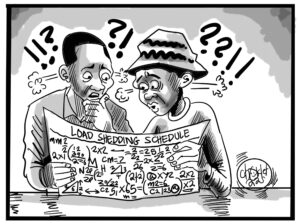Last week’s opinion piece began examining the implementation of Zambia’s Public Debt Management Act (PDMA), focusing on key provisions that have been enacted. While acknowledging the government’s progress, the article highlighted that several important provisions remain unimplemented. A major obstacle is the absence of clear subsidiary legislation (respective Statutory Instruments, Regulations and Guidelines) to interpret, implement, and enforce the Act’s provisions. This week’s opinion shifts focus to explore the ramifications of these unimplemented provisions and their impact on debt sustainability efforts.
a) Establishment and Operationalisation of a Sinking Fund
One of Zambia’s key strategies for managing its commercial debt, particularly Eurobonds, is the operationalization of a sinking fund as provided for in Section 25 of the PDMA. However, due to unclear guidelines, implementation has faced challenges. Moreover, following the success restructuring of Zambia’s Eurobond debt, Zambia’s three Eurobonds (US$750 million, US$ 1 billion and US$1.25 billion) were revamped for two new bonds; Bond A (US$1.7 billion, maturing in 2033) and Bond B (US$1.35 billion, maturing in 2053 with a 27-year grace period and bullet payment).
Debt servicing for Bond A has already resumed using budget finances. Whereas Bond B will be re-paid by means of a bullet payment (i.e. a lump-sum repayment of the entire principal amount of the bond). Therefore, according to the PDMA, the government must establish a sinking fund for Bond B to prevent potential defaults on this Bond.
b) Publication of Updates on the Implementation of the Annual Borrowing Plan.
Despite the mandatory presentation of the Annual Borrowing Plan (ABP) before parliament alongside the national budget, of which government has consistently done from the time the PDMA was passed, there have been no publication detailing the implementation of these plans so far as provided for by the Section 10 of the PDMA. This section provides for the biannual reporting of ABP implementation. This year, the drought had created a fiscal gap of K22.2 billion which demanded the revision of the budget and ABP. However, government went ahead and revised the 2024 ABP and presented it to National Assembly without providing an update on the implementation of the initial 2024 ABP. This compromises the ability of stakeholders such as the public to monitor whether the government is adhering to its borrowing targets and commitments throughout the financial year. Ultimately, it also compromises levels of debt transparency.
c) Establishment of the Debt Management Office (DMO)
As discussed in last week’s opinion piece, the government has not yet fully established the DMO in the Ministry of Finance and National Planning as provided for by Section 5 of the PDMA. Fully establishing DMO is important as this is regarded the central agency responsible for ensuring the full operationalization of the various provisions of the Act, including managing public debt, issuing government securities, managing guarantees, managing sinking funds, and advising the government on debt-related policies. In as much as there is already a fully functional Investment and Debt Management office in the ministry, establishing a DMO as prescribed by the PDMA will be key ensuring compliance with statutory requirements and consistency with international best practices.
d) Sub-Optimal Loan Contractual Procedures
While Section 11 of the PDMA establishes a clear framework for borrowing, slow implementation of provisions, such as the detailed loan approval processes, has contributed to inefficiencies in the loan contraction process. These delays hinder the government’s ability to follow the Annual ABP effectively. These delays have also affected the government’s ability to secure financing for critical projects in a timely manner, thereby challenging budget credibility and slowing down project execution milestones.
While the PDMA establishes an enhanced legal framework for managing public debt, no recent updates have been regarding the finalization of subsidiary legislation beyond what is established in the Act. The failure to fully implement key provisions of the PDMA Zambia increases Zambia’s risk of potential future defaults especially on the Eurobond B’s bullet payment, ultimately compromising the effective achievement of debt sustainability.
Therefore, the finalisation of the subsidiary legislation is crucial for effective enforcement the PDMA. Additionally, besides providing timelines for the establishment of a new sinking, there is also need for government to clarify how much was in the old sinking fund and whether these funds will be transferred to the new one.
It is important for the government to publish a report on the implementation of the 2024 annual borrowing plan before presenting the 2025 national budget to national assembly, detailing loan terms, including what was approved versus what was contracted. Furthermore, publishing detailed loan contracts will foster transparency and allow the public to better understand and appreciate the loan terms and their impact on the country’s development. Lastly, the government should expedite loan contracting procedures to avoid delays in project implementation and enhance budget credibility.
About the Author: Peter N Mumba is a policy researcher and development economist currently coordinating the Zambia Debt Alliance. He holds a master’s degree in economics from the University of Namibia, along with additional qualifications in monitoring and evaluation and business information systems.



















